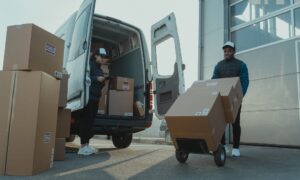
It’s important to keep in mind that commercial aviation is one of the safest ways of transportation in the world, even though experiencing a first-time flight can be both exhilarating and anxiety-inducing at the same time. As the keepers of your safety in the air, pilots are subjected to intensive training and are expected to abide by stringent safety regulations in order to guarantee that every flight is a risk-free and trouble-free experience. This article will deal with the intricate details of each aspect.
Flying for the First Time? Checklists for Pre-Flight Preparation
Before every flight, pilots go through an exhaustive pre-flight routine that doesn’t leave anything to chance. This exhaustive checklist examines every facet of the aircraft’s state from every conceivable angle. Pitot Static Adapters are equipment that is used in the aviation industry to make the process of calibrating and testing pitot-static systems on aircraft easier. These systems are essential in order to provide the pilot with precise information regarding the aircraft’s airspeed, altitude, and vertical speed. These adapters are an extremely important component of aircraft systems and are responsible for guaranteeing the precision and dependability of pitot-static measurements. They help to ensure that flights are safe, that rules are followed, that money is saved, and that maintenance procedures are carried out effectively. Regular calibration and testing with these adapters are critical practices in the aviation industry to maintain the highest possible levels of safety and accuracy in airspeed and altitude readings. This can only be accomplished by consistent use of the adapters.
Monitoring the weather
Because of the ever-present threat posed by the environment, pilots are required to keep a vigilant eye on both the weather forecast and the current conditions along the whole flight path. In order to receive the most recent information, the flight crew works along with the meteorologists and the controllers of the air traffic. They keep a vigilant eye on weather patterns, places that could potentially experience turbulence, thunderstorms, and any other conditions that could be hazardous. The flight route can be altered to avoid these locations if it turns out to be essential. This will both protect the passengers and make the trip go more smoothly.
Aviation Servicing and Repairs
Aircraft maintenance is the backbone of aviation safety. The aviation authorities establish rigorous maintenance schedules and procedures, which the airline industry faithfully follows. Each aircraft in the fleet undergoes routine maintenance and inspection by qualified technicians who have received certification. The maintenance tests are extremely thorough, and pilots rely on the results to ensure that the aircraft is airworthy and safe for flight. Any maintenance problems that are found are fixed thoroughly, and no flight takes off until it is determined that the aircraft is ready to be put into service.
Training That Is Ongoing
Pilots undergo extensive training that doesn’t end with their initial certification. Throughout their careers, they must pass skill tests and participate in continual training. These examinations cover a wide variety of events, such as unexpected emergencies and malfunctions in operating systems, which the pilots must effectively navigate to pass. They are kept sharp and well-prepared to deal with any unanticipated obstacles that may arise while they are in the air by virtue of this constant training.
Communication and working together
Efficient communication and working together are two of the most important factors in ensuring the safety of aircraft. Air traffic controllers, who give critical information and directives, are in continual communication with pilots, who keep constant communication with them. This continuous dialogue ensures that the aircraft remains on the safest path and is well-coordinated with other air traffic. Within the aircraft, the flight crew, including the first officer and flight attendants, work in unison to address any in-flight issues promptly and maintain a secure and comfortable cabin environment for passengers.
Conclusion
Even if the idea of taking your first flight can be nerve-wracking, it is essential to have faith in the professionalism and commitment of the flight crew, especially the pilot. The safety of passengers is the primary concern of airlines; hence, pilots receive intensive training and are provided with the necessary equipment to manage a wide variety of challenging scenarios effectively.






